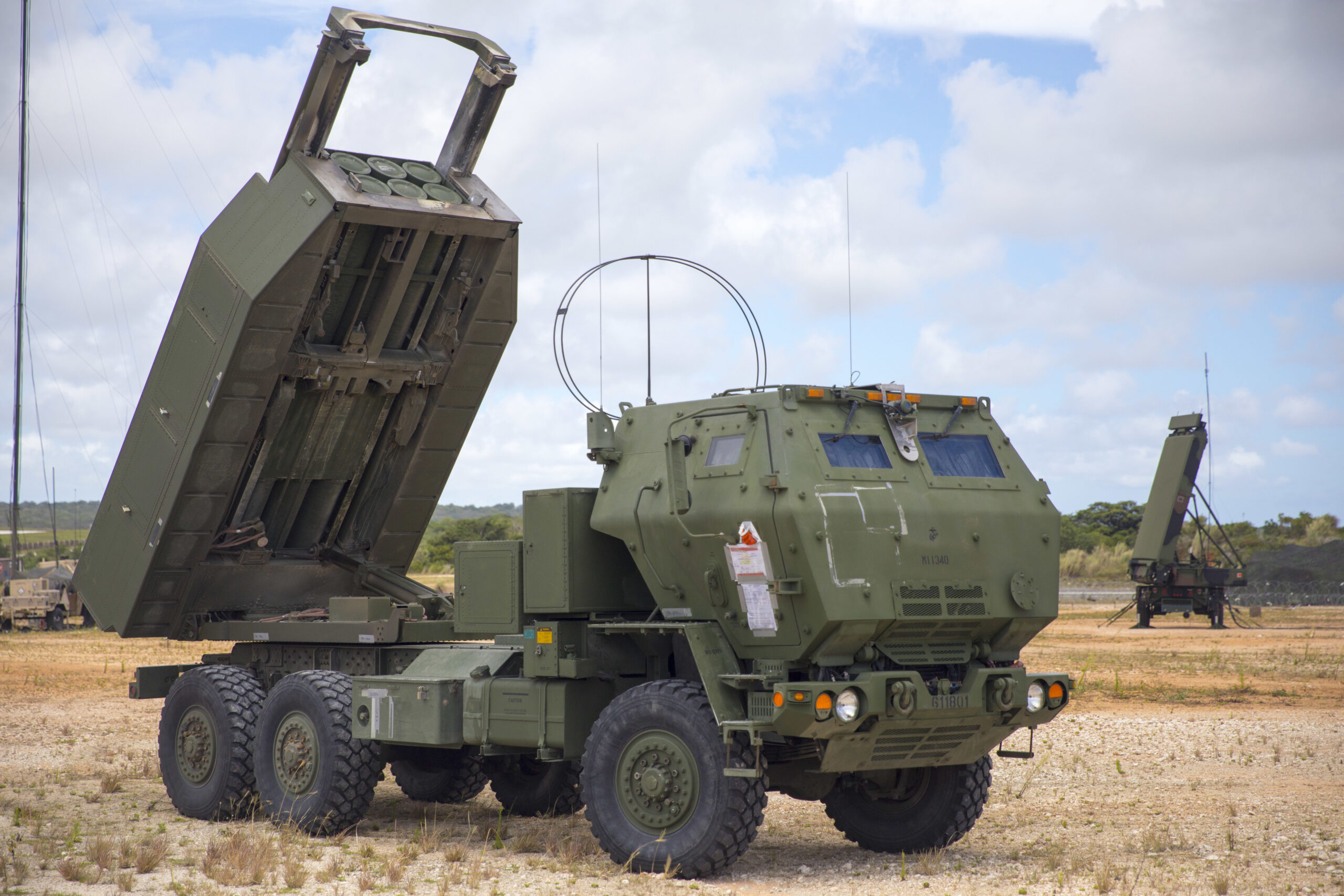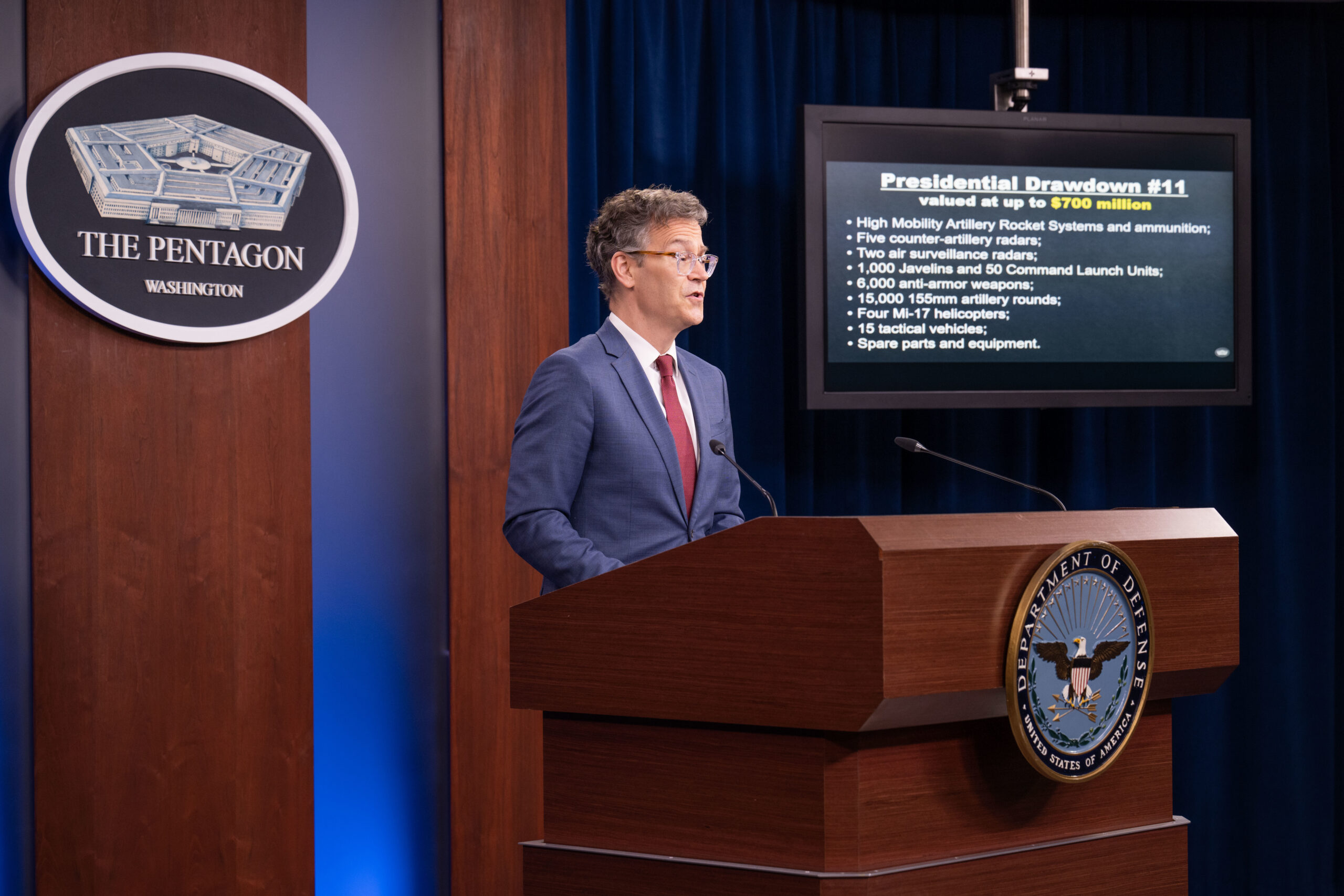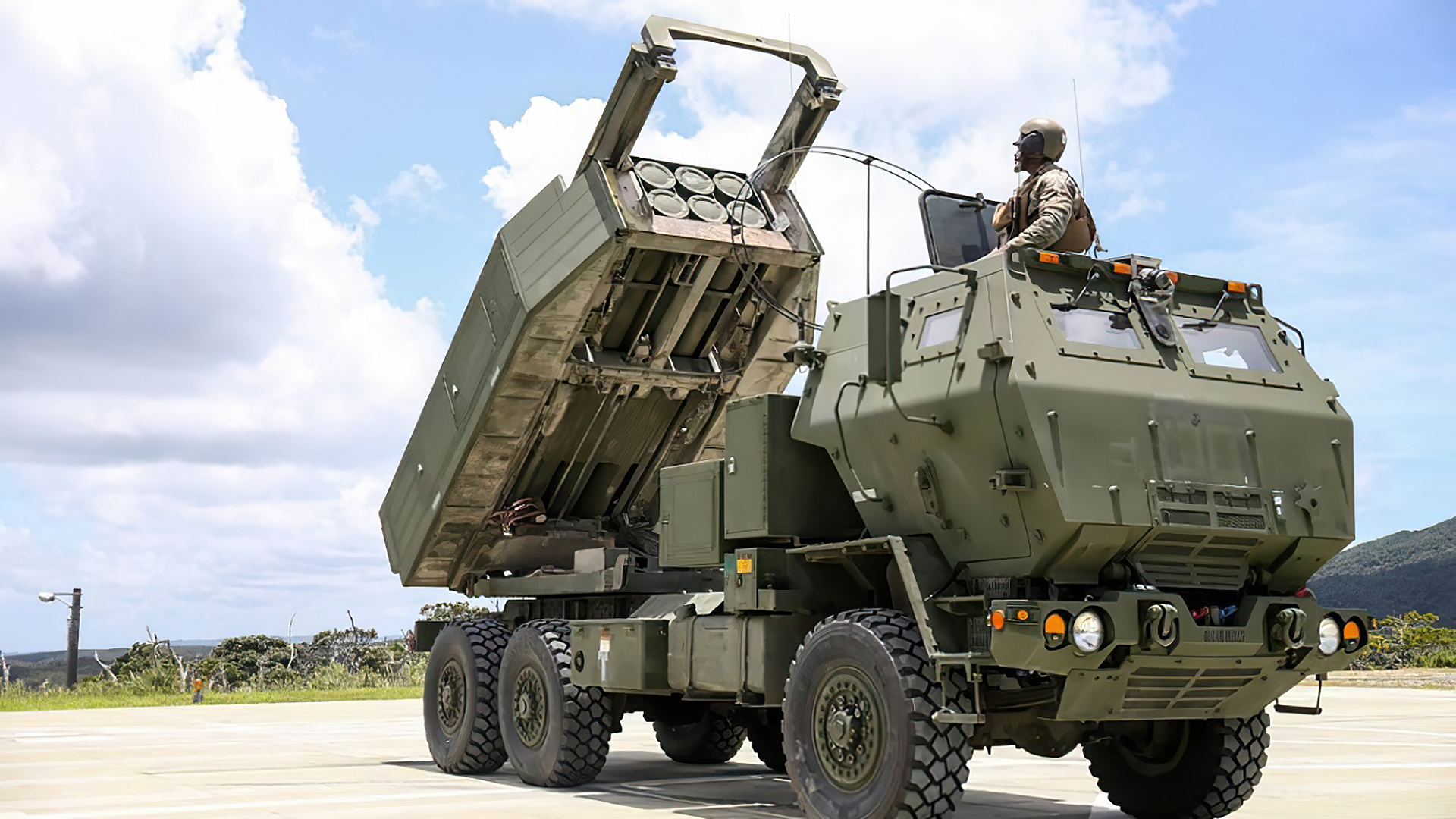Ukrainian troops are a week from finishing a crash course on operating M142 High Mobility Artillery Rocket Systems, or HIMARS. The systems are donated by the U.S. and there will be more to follow once Ukrainian forces demonstrate their effective use in combat, a senior U.S. defense official said on June 14.
Colin Kahl, U.S. Under Secretary of Defense for Policy, called the first four HIMARS systems promised to Ukraine, along with 227mm Guided Multiple Launch Rocket System (GMLRS) rockets they’ll be supplied with, an “initial tranche. It is “absolutely fair” to characterize the long-range rocket artillery systems as the first of many the U.S. will send to Ukraine’s aid, Kahl said at the Center For A New American Security (CNAS) think tank’s National Security Conference in Washington, D.C.

“We’re going to provide the Ukrainians what they need to prosecute the targets inside Ukrainian territory,” Kahl said. “Because this is not a system the Ukrainians have, historically, they have to get trained on them. So we did provide an initial tranche of HIMARS systems and the Ukrainians are completing training as we speak. We expect those systems to get into the fight soon, and we’re committed to continuing the flow of those munitions, and I know other allies and partners are too.”
Ukrainian officials have pleaded with donor nations for longer-range artillery systems like HIMARS and thousands of rounds of NATO-standard artillery ammunition to hold off Russian advances in the Donbas.
Kahl emphasized that the GMLRS rockets for the U.S.-supplied M142s are precision-guided munitions weighing about 500 pounds apiece and are not fired in large salvos. Instead, they are fired at specific targets and have the effect of a precision airstrike, allowing Ukraine to “do a lot with a little, or you don’t need a lot to have a significant effect.” Before U.S. officials officially announced HIMARS donations to Ukraine, The War Zone made exactly the same point about these systems not being used as salvo weapons when firing guided rockets in this piece.
Kahl said there is a “palpable” sense of anxiety in Ukraine that Russia is winning the artillery duel in the Donbas region and will eventually succumb without significantly more arms from NATO and other backers. Superiority of supply in ammunition and personnel has allowed Russia to make some gains in recent days around Severodonetsk, but Russian troops are paying dearly for marginal advances, Kahl said. Ukrainian forces are running out of ammunition for legacy systems and are shelled by as many as 10 Russian rounds for every one they can fire back.
“The Russians have been making gains … although the gains are really on any given day measured in blocks,” Kahl said. “They are not large sweeping breakthroughs of Ukrainian defenses. The Ukrainians remain stalwart defenders. There are significant casualties, but that is true on both sides. So the Ukrainians are definitely taking casualties. The Russians are taking a lot of casualties as well, and the front lines are not moving very much.”
Russia does have more artillery in the field and more ammunition for it, but that is mainly the result of Ukraine having chewed through its stockpiles of 152mm ammunition for Soviet-era artillery cannons, Kahl said. At the outset of the war, NATO was able to rush more of that ammunition to Ukraine from former Warsaw Pact nations, but those stocks also have begun to dry up, he said.
“So we made the transition to NATO standard artillery system, specifically to M777 howitzers,” Kahl said. “We’ve now provided 108 of those howitzers, plus more than 220,000 rounds of ammunition.”

Asked what an acceptable endgame in Ukraine might look like to the U.S. and NATO allies, Kahl said the decision on when and how to negotiate an end to the war lies solely with Ukraine.
“It’s not clear whether the minimum requirements of either side match up with the maximum concessions of the other side,” he said. “We’re not going to tell the Ukrainians how to negotiate, what to negotiate, or when to negotiate. They’re going to set those terms for themselves. Our role is to help them make sure that they can defend themselves against the Russian onslaught, and they’ve been doing an unbelievably courageous job at that.”
The frontlines have changed little, but plenty is happening in Ukraine and on the periphery of the conflict. Before we look at the most recent developments, take a moment to review our previous situation report.
The Latest
U.S. Secretary of Defense Lloyd Austin is set to discuss Ukraine’s future military requirements with as many as 50 nations during a Ukraine Defense Contact Group meeting in Brussels on June 15. The conference’s focus will be on fulfilling Ukraine’s immediate requirements for turning back the Russian assault in the Donbas, according to Defense Department officials.
In his nightly address to the nation, Ukrainian President Volodymyr Zelensky said the Donbas fight “will surely go down in military history as one of the most brutal battles in Europe and for Europe. … We are dealing with absolute evil.”
Russia’s main assault remains concentrated on the Severodonetsk pocket, where its forces are gaining some ground against Ukrainian defenders, according to the latest intelligence assessment from the U.K. Ministry of Defense.
To meet the demands of its war in Ukraine for military equipment, Russia is considering hiking its defense budget by as much as 700 billion rubles. That shakes out to about $12 billion, which doesn’t sound like a lot compared with U.S. military spending but amounts to a 20 percent bump in Russian defense spending, according to the U.K. MoD.
“Russian government funding is allowing the country’s defense industrial base to be slowly mobilized to meet demands placed on it by the war in Ukraine,” the U.K. MoD said. “However, the industry could struggle to meet many of these requirements, partially due to the effects of sanctions and lack of expertise. Russia’s production of high-quality optics and advanced electronics likely remain troubled and could undermine its efforts to replace equipment lost in Ukraine.”
Russian forces were seen riding through Ukraine on a specialized “Yenisei” armored train armed with ZU-23 twin-barrel 23mm automatic cannons and a BMP-2 infantry fighting vehicle. A similar military train was seen arriving in the Ukrainian city of Melitopol in March. Trains such as these are important for Russia’s military to move tanks, armored vehicles, equipment, personnel, and supplies across vast distances within its borders and to and within Ukraine.
We have gotten a better look at Russia’s Project 22160 patrol ship at a port on the Black Sea with a Tor anti-aircraft missile system lashed to its deck. Installing the missile system on the ship’s deck beefs up its air defenses against Ukrainian attacks that have sunk larger ships in the Black Sea. It also strengthens Russia’s naval posture in keeping the Black Sea closed to Ukrainian commercial traffic into and out of Ukrainian-controlled parts of the country.
By using such ships to bottle up Ukrainian grain in Black Sea ports, Russia is “weaponizing” food, according to Zelensky’s Chief of Staff Andriy Yermak. He said that Russia is stealing Ukrainian grain and selling it to other countries, particularly those in Africa, to fund its war.
Ukraine hasn’t entirely run out of ammunition for its Soviet-era artillery systems. A 203mm 2S7 Pion self-propelled heavy artillery cannon was seen recently firing in the Donbas. The system can launch projectiles up to 29 miles.
Video emerged online Tuesday of Ukrainian forces deploying a mine-clearing line charge, though the exact type of launcher is obscured in the footage. The rocket-propelled charge is fired over a minefield where it then blows a linear path through which troops and vehicles can safely move.
With unmanned aerial systems constantly whizzing through the air scoping out targets, and being used to direct artillery fire, both sides are training anti-drone technologies on the sky. Ukraine recently brought down a Russian Orlan-10 reconnaissance UAS, apparently through electronic means because photos show it having landed almost completely intact between rows of Ukrainian crops.
Eyeing the fighting on their doorstep, European NATO member states are not only sending aid to Ukraine but also investing anew in their own military capabilities. Lithuania, for instance, recently announced the purchase of 18 CAESAR Mark II wheeled self-propelled howitzers from France.
Microsoft ended its Xbox Games Showcase Extended 2022 festivities with a peek at the Stalker 2 video game that takes place in a post-apocalyptic Chornobyl exclusion zone. The game’s release has been delayed until next year because its developers live in Ukraine, where many are fighting the Russian invasion. The developers’ stories were shared at the Microsoft event and in the below video published on Youtube.

We will update this post until we state otherwise.
Contact the author: Dan@thewarzone.com
